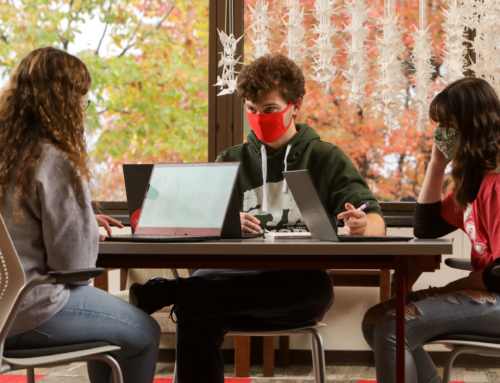By Dana Yamashita
A shortage of protective face masks, a confirmed barrier against the droplets that can cause COVID-19, has led to many innovative solutions. One idea is to create a method by which the normally single-use masks can self-disinfect to allow for longer wear.
An interdisciplinary team of engineers is looking at ways to equip N95 respirator masks with antiviral properties and the ability to withstand sterilization, thus better protecting health care workers and enabling the current supply of masks to last longer.
Helen Zha, an assistant professor of chemical and biological engineering and a member of the Center for Biotechnology and Interdisciplinary Studies at Rensselaer (CBIS), says, “The idea we have in mind is to develop a process where someone in the hospital can apply a very thin coating of an inexpensive polymer material to the mask stock that they already have, that will give it antiviral properties and also enable sterilization procedures.”
“Our proposed technology would make the mask self-disinfect by inactivating viral particles on contact. If successful, such a technology might enable health care workers to safely use the same mask for longer periods of time,” said Edmund Palermo, an assistant professor of materials science and engineering and a member of the Center for Materials, Devices, and Integrated Systems (cMDIS) at Rensselaer. Zha’s expertise in making ultrathin protein and polymer coatings on surfaces, combined with Palermo’s expertise in antimicrobial polymers, form an ideal partnership for this research effort.
The plan is to create a DIY kit for application of the coating to the N95 masks currently in use.
Simultaneously, Rensselaer researchers have also developed another potential solution: a machine that uses ultraviolet (UVC) light to sterilize thousands of protective masks each day.
This project began at the request of longtime researcher partners at Mount Sinai in New York City.
The UVC sterilization system, developed by a multidisciplinary team of engineers, stands about eight feet tall and about eight feet long. Two UVC lamp fixtures, each containing two UVC tubes, are attached vertically across from one another so that masks — hung on a series of hooks that are part of a motorized belt system — can pass in between the two UVC sources. The speed of that belt determines the dose of radiation that the masks receive.
Bob Karlicek, the director of the Center for Lighting Enabled Systems & Applications (LESA) at Rensselaer, says the system is unique because of its vertical setup, which allows light to disinfect the masks from both sides.
Karlicek designed and built the machine with Mohammed Alnaggar, an assistant professor of civil and environmental engineering, and Arunas Tuzikas, a senior staff engineer within LESA. They worked with Mattheos Koffas, a professor of chemical and biological engineering, as well as senior research staff within CBIS — including Brigitte Arduini, Jason Davis, and Sergey Pryshchep — and doctoral students Deepika Vaidyanathan and Sneha Gopal.
The system will be tested at Mount Sinai on masks that have been infected with the virus that causes COVID-19 to help researchers adjust the speed of the belt for better results. From there, the system will need to be approved for use by the Food and Drug Administration.



